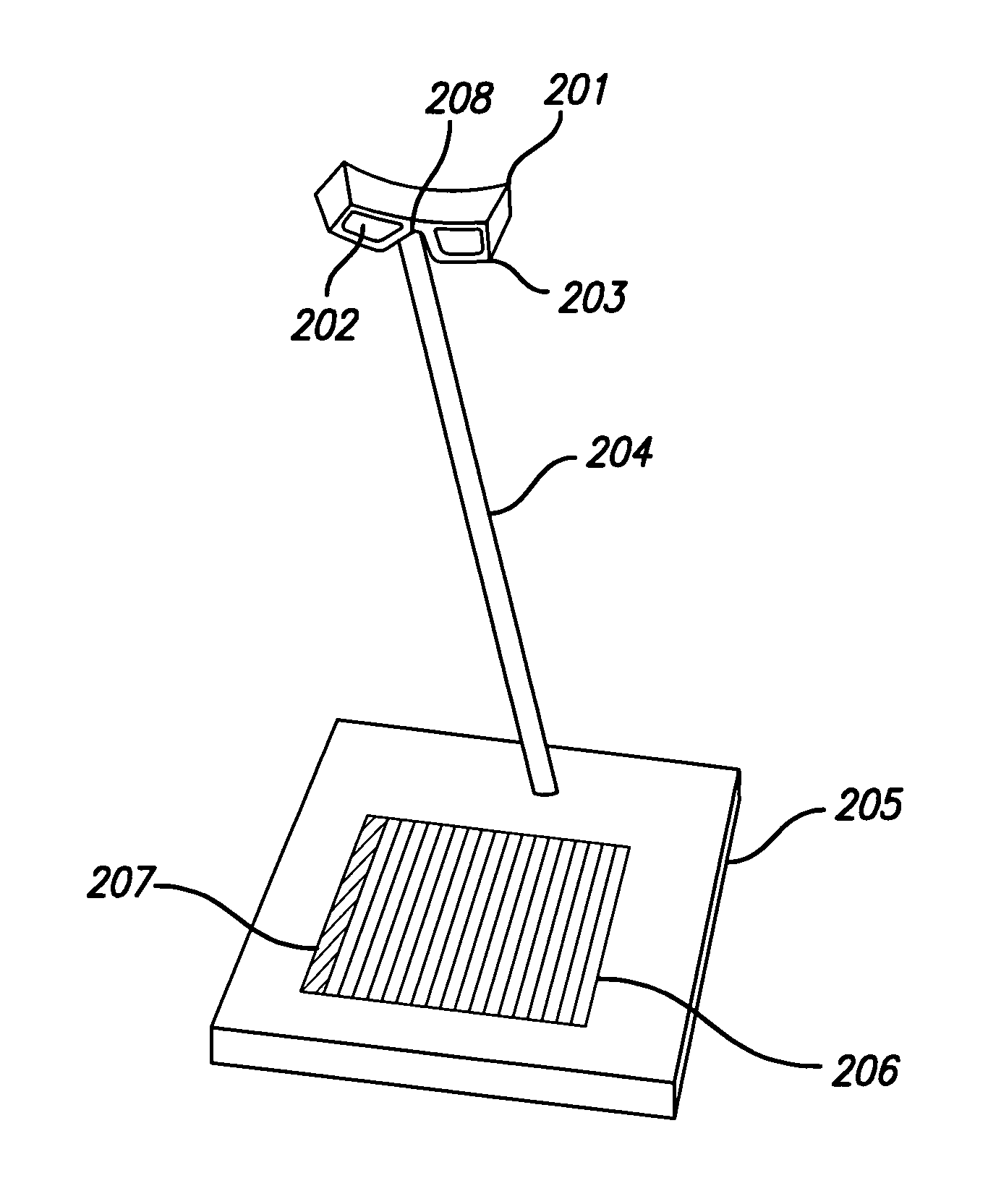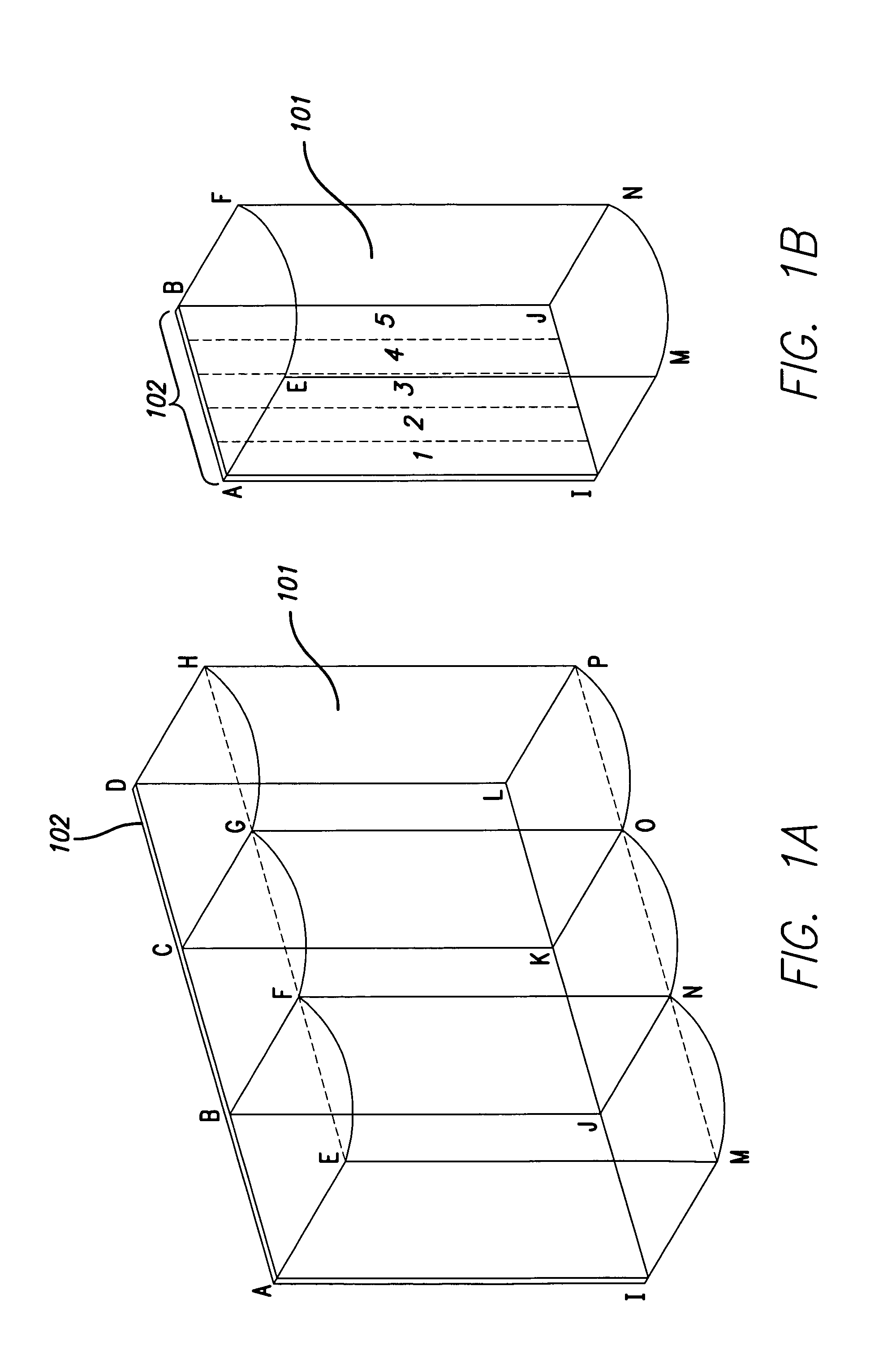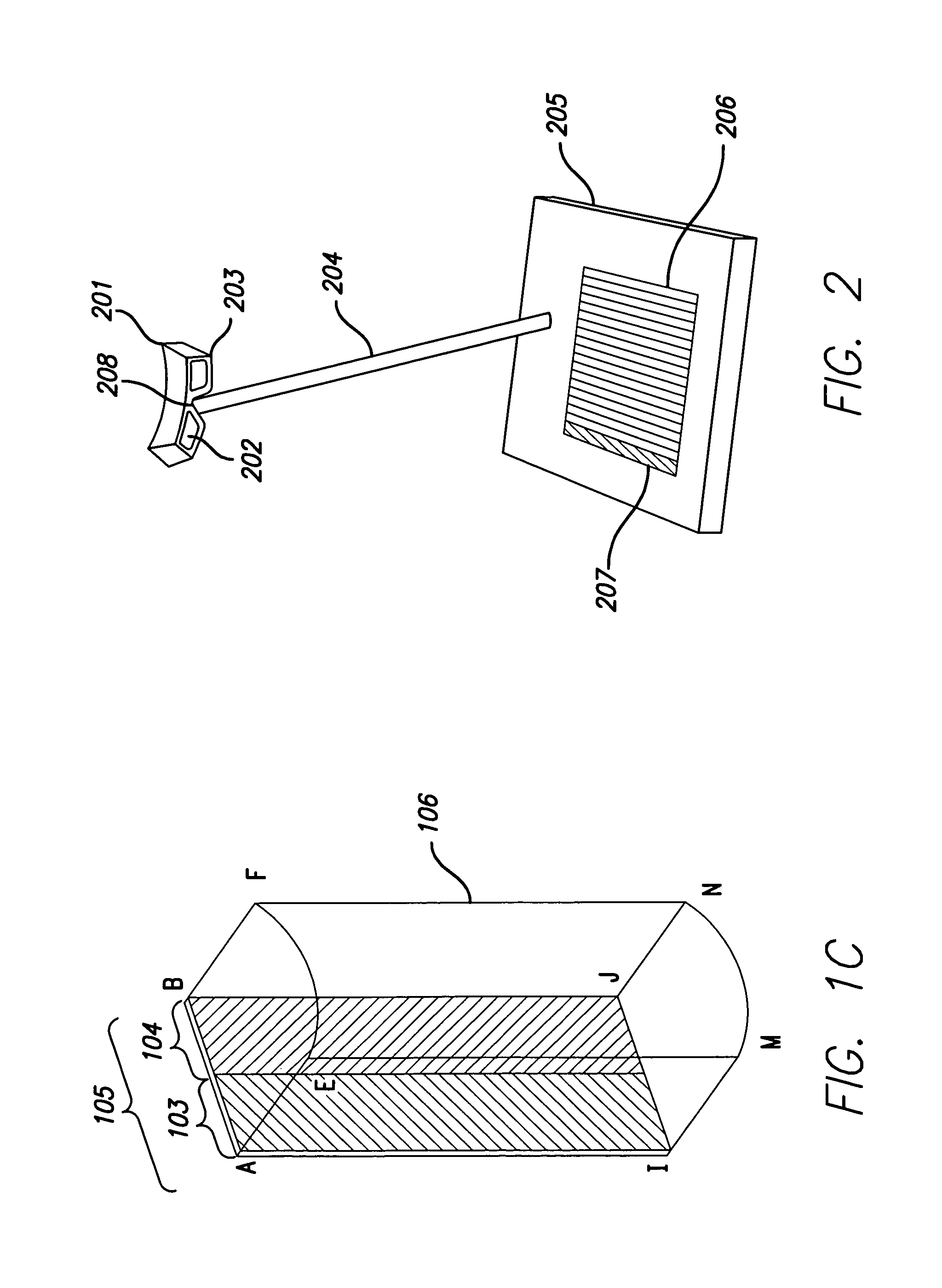Method and apparatus for optimizing the viewing distance of a lenticular stereogram
a lenticular stereogram and viewing distance technology, applied in the field of three-dimensional stereoscopic print images, can solve the problems of inability to precisely juxtapose, lenticular stereograms have a limited range of points at which they can be viewed without degradation, and inhibit the medium from becoming more pervasive, so as to improve the viewing zone and increase the viewing zone
- Summary
- Abstract
- Description
- Claims
- Application Information
AI Technical Summary
Benefits of technology
Problems solved by technology
Method used
Image
Examples
Embodiment Construction
[0026]Referring to FIG. 1A, a portion of a lenticular screen 101 and associated print 102 is illustrated. The term “print” is used broadly to signify any well-known displays, such as a rear-projected display, a photographic print, a photo-mechanically-reproduced print, or an electronic display screen, as well as combinations of these known displays. The print 102 is fixed in intimate juxtaposition with the lenticular screen 101 such that two parallel planes are referenced: the plane of print 102 is defined by points ADLI and the reference plane of the lenticules is defined by points EHPM. The lenticules are individual cylindrical lenses, EFNM, FGON and GHPO having cylindrical surfaces illustrated as equal radius arcs EF, FG and GH, and corresponding arcs MN, NO and OP respectively. The lenticule screen is overlaid on top of reference plane EHPM and each lenticule is optically aligned in intimate juxtaposition with a corresponding rectangular print area on print 102 to provide differ...
PUM
 Login to View More
Login to View More Abstract
Description
Claims
Application Information
 Login to View More
Login to View More - R&D
- Intellectual Property
- Life Sciences
- Materials
- Tech Scout
- Unparalleled Data Quality
- Higher Quality Content
- 60% Fewer Hallucinations
Browse by: Latest US Patents, China's latest patents, Technical Efficacy Thesaurus, Application Domain, Technology Topic, Popular Technical Reports.
© 2025 PatSnap. All rights reserved.Legal|Privacy policy|Modern Slavery Act Transparency Statement|Sitemap|About US| Contact US: help@patsnap.com



